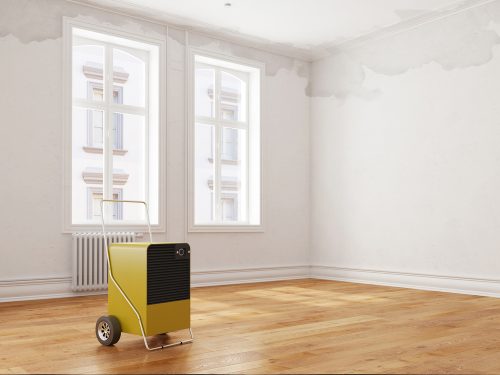5 Steps to Check Off Before You Paint Your Walls

Maybe you’re tired of your wall color and want to change it, or maybe you just want to give your walls a fresh paint of coat. That’s fine! But before you start, you should follow some important preparations if you want the professional finish that you’re imagining for your walls.
Your home walls are your strongest feature. So, you should prepare before you paint them. By doing so, you’ll enjoy professional, more beautiful results.
What should you do before painting your walls?
Painting your walls is a time-consuming project. On top of the painting itself, we need to check off some basic “requirements” beforehand if we want perfect walls. More often than not, these prior steps are more important than actually applying the paint itself.
These steps are crucial because if your walls aren’t in good painting condition, the results will be poor even if you use the best, most expensive materials. Read these steps carefully before you paint your walls.
1. Clean thoroughly
We often skip this step but before applying the paint, it’s crucial that you remove any kind of residue from your walls. You can use a broom or rag, it doesn’t matter as long as it’s dry. Start at the top and work your way down to remove anything that’s stuck onto your walls: spiderwebs, dust, etc.
Remember that if your wall’s surface isn’t clean, paint can’t adhere properly and it’ll only be a matter of time when it starts to peel off. We don’t recommend using water to clean your walls because it’ll require time to dry, and we’re guessing that you’d like to start as soon as possible.
2. Look for leaky areas
When we undergo ceiling or wall painting projects (interior and exterior), leaky areas can create humidity. They’re easy to spot: these areas are darker, stained and the paint is often cracked.
If you’re worried that you have a leaky or broken pipe, you should hire a specialist to fix it.
Once you’ve taken care of all the leaky spots, you’ll be okay to paint. Should you go ahead and just paint over the damp areas without fixing them, all your money, time and efforts will just go down the drain… Those spots will just come back!

3. Repair holes
We hang pictures, shelves, frames and many other things on our walls. When we take them all down to paint, removing the nails will create holes. They might not be so noticeable on a white wall, but if you want to paint your walls a different color (especially if you use darker ones) they’ll be more visible.
We recommend using a spatula to fill in the holes with an appropriate material, especially if you’re not planning on hanging something up in the same spot. Let it dry and give it a light bleach before applying the first coat of paint.
4. Cover your furniture and floor
By now, you’re all ready to get started with your walls… but maybe you haven’t thought about how messy paint can be and that it could splatter onto everything. While completely changing our rooms before moving out would be ideal, it’s not possible; so, at the very least, just move all your furniture to a different area of the house.
If you can’t move your furniture either, lump it together in the center of the room, far away from the walls. Then, cover it with old sheets or plastic tarp.
On a further note, make sure you cover the sockets and tiles. You can use newspaper, plastic bags or any other material that’ll cover your floor from the paint that’ll splatter when you work on the higher areas of the walls.
5. Test the paint color
If you’re still unsure about which color you want your walls to be, don’t buy a big can until you’ve tested the color. Ask for a small sample and try out a streak on your wall.
Test to see if you like it and, if you do, go ahead with a bigger can. If you request a certain color that needs to be prepared specifically for you, it’s always a good idea to order a large quantity. Why? Even though you may end up with leftover paint, prepared colors won’t always come out the same… And then you might end up with different colored walls later!
To wrap up, aim to buy high-quality paint and materials. They’re not always the most expensive. Ask your store for their recommendations.
Maybe you’re tired of your wall color and want to change it, or maybe you just want to give your walls a fresh paint of coat. That’s fine! But before you start, you should follow some important preparations if you want the professional finish that you’re imagining for your walls.
Your home walls are your strongest feature. So, you should prepare before you paint them. By doing so, you’ll enjoy professional, more beautiful results.
What should you do before painting your walls?
Painting your walls is a time-consuming project. On top of the painting itself, we need to check off some basic “requirements” beforehand if we want perfect walls. More often than not, these prior steps are more important than actually applying the paint itself.
These steps are crucial because if your walls aren’t in good painting condition, the results will be poor even if you use the best, most expensive materials. Read these steps carefully before you paint your walls.
1. Clean thoroughly
We often skip this step but before applying the paint, it’s crucial that you remove any kind of residue from your walls. You can use a broom or rag, it doesn’t matter as long as it’s dry. Start at the top and work your way down to remove anything that’s stuck onto your walls: spiderwebs, dust, etc.
Remember that if your wall’s surface isn’t clean, paint can’t adhere properly and it’ll only be a matter of time when it starts to peel off. We don’t recommend using water to clean your walls because it’ll require time to dry, and we’re guessing that you’d like to start as soon as possible.
2. Look for leaky areas
When we undergo ceiling or wall painting projects (interior and exterior), leaky areas can create humidity. They’re easy to spot: these areas are darker, stained and the paint is often cracked.
If you’re worried that you have a leaky or broken pipe, you should hire a specialist to fix it.
Once you’ve taken care of all the leaky spots, you’ll be okay to paint. Should you go ahead and just paint over the damp areas without fixing them, all your money, time and efforts will just go down the drain… Those spots will just come back!

3. Repair holes
We hang pictures, shelves, frames and many other things on our walls. When we take them all down to paint, removing the nails will create holes. They might not be so noticeable on a white wall, but if you want to paint your walls a different color (especially if you use darker ones) they’ll be more visible.
We recommend using a spatula to fill in the holes with an appropriate material, especially if you’re not planning on hanging something up in the same spot. Let it dry and give it a light bleach before applying the first coat of paint.
4. Cover your furniture and floor
By now, you’re all ready to get started with your walls… but maybe you haven’t thought about how messy paint can be and that it could splatter onto everything. While completely changing our rooms before moving out would be ideal, it’s not possible; so, at the very least, just move all your furniture to a different area of the house.
If you can’t move your furniture either, lump it together in the center of the room, far away from the walls. Then, cover it with old sheets or plastic tarp.
On a further note, make sure you cover the sockets and tiles. You can use newspaper, plastic bags or any other material that’ll cover your floor from the paint that’ll splatter when you work on the higher areas of the walls.
5. Test the paint color
If you’re still unsure about which color you want your walls to be, don’t buy a big can until you’ve tested the color. Ask for a small sample and try out a streak on your wall.
Test to see if you like it and, if you do, go ahead with a bigger can. If you request a certain color that needs to be prepared specifically for you, it’s always a good idea to order a large quantity. Why? Even though you may end up with leftover paint, prepared colors won’t always come out the same… And then you might end up with different colored walls later!
To wrap up, aim to buy high-quality paint and materials. They’re not always the most expensive. Ask your store for their recommendations.







